A visit to Saint-Cloud is a visit to a heavily restored and renovated garden. Even before one sets foot in the garden, attention is drawn to a board explaining that a storm in 1999 caused so much damage, that extensive restoration was necessary. In normal circumstances, the results of this work would really show. It does, but in a good way. Many avenues consist of younger specimens, but as they all are the same age, a sense of consistency throughout the garden prevails.
André Le Notre’s design for Louis XIV’s younger brother is still maintained and rejuvenated.
This consistency might have its roots in the history of the garden itself: in 1870, a fire destroyed the castle, leaving only the garden to focus on in terms of monumentality and maintenance. But that explanation is too easy, there is more. 1Great pictures of the castle when intact, a depiction of the fire, and photos of the castle after the fire can be found following the links.
- The site of the castle (right) and that of the garden with 1866 statues (left). In the middle the former orangery.
- Looking from the castle towards the 1866 statue garden.
- Other 19th century additions.
- Date (1866) on one of the statues.
- The central pond with some statues).
- Information board at Saint-Cloud.
- Information board in situ.
- Location of the former palace.
- Original (1811) layout of gardens and palace.
All photos by HvdE 2011.
One of the central parts of the garden still leans heavily on the original Le Notre design. Slightly west of where the castle used to be it has retained the terraced layout, the ponds with their many fountains and the avenues radiating from (or towards) one central point of focus. The statues dotted along the side of the paths that enclose the ponds, are consistent with an original 17th century layout. But the statues all seem to be 19th century productions. More than one have the date 1866 chisseled in their bases. Nearby an elegant but weird pond-cascade-statue combo displayes clear late 19th century features (this may be dating from a bit later, 1890s or something). What happened in this section the garden?
It seems these 19th century features are not directly connected with the 1870 fire, as the statues are from around 1866 and I do not want to presume the fire was premeditated. 2A canon ball used in the war between France and the Prussians set fire to the castle on October 13, 1870 -the Prussians had sieged the castle just three weeks earlier. A plaquette in the garden points out that there used to be an orangery placed near the west facade of the castle. The orangery formed part of the original 17th century garden, but it was demolished in 1863. That destruction might have been part of a larger plan to restore or renovate the garden near the west facade, including fixing the pond area. But there is no sign in the garden that could tell me anything about this part of its history. I could be wrong, you know…
At the moment, only the plaquette and the dates on the statues’ bases testify to what might have happened during that period. Restoration work still continues in other parts of the garden, and one avenue that borders directly to this part of the garden wil be restored or renovated in the next years. It would be great when the domain’s owner, Le Centre des monuments nationaux, could set up one of their famous signs to further detail this otherwise forgotten part of Saint-Cloud’s history.
After all, it is often hard enough to reconstruct the development of a garden when no restoration or renovation has taken place. It is so much more difficult when these have occured, but are not identified as such. Though I do like the puzzles they offer, too…
Footnotes
| ↑1 | Great pictures of the castle when intact, a depiction of the fire, and photos of the castle after the fire can be found following the links. |
|---|---|
| ↑2 | A canon ball used in the war between France and the Prussians set fire to the castle on October 13, 1870 -the Prussians had sieged the castle just three weeks earlier. |


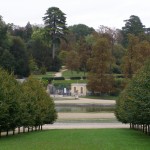
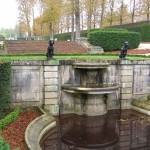
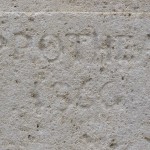
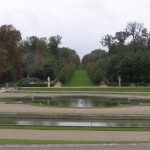
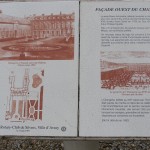
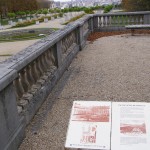
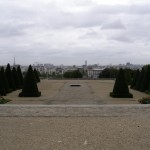
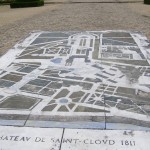


A burned castle disapeared creates a park nostalgic at will
https://www.flickr.com/photos/73553452@N00/6390993599/in/album-72157607311857197/
Thanks for the picture, Akteon.
I just now realised that I had the slideshows disabled, leaving readers without any photos at all. I have now set them up in a gallery.